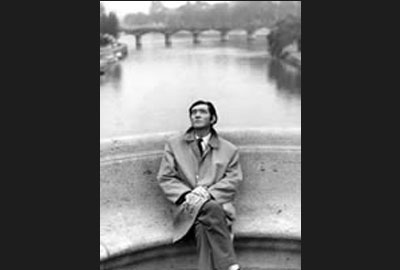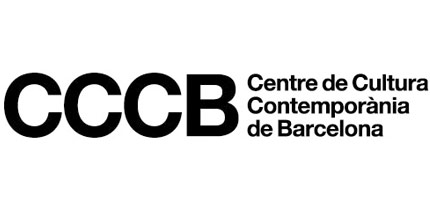Kosmopolis 2004
Exhibition
Julio Cortázar
Travels, images and other territories
The show has been conceived as an examination of the Cortázar archive and, at the same time, as a device or mechanism that brings across the transgressive ambition of Cortázar's oeuvre and his liking for the irruption of the fantastic in the everyday world and for playing with different genres.
The aim of this exhibition is to explore the personal and literary world of Julio Cortázar by means of his travels, his letters and his incursions into photography, a discipline to which the author of Rayuela accorded particular importance, comparing it to the short story.
The exhibition includes the series of photographs from Meditations on the Observatory , photos and documents from other journeys: Cuba, Ceylon, Nicaragua, the north of Argentina, the United States, Poland, Barcelona, etc.; the series of Muñeca rota and Los autonautas de la cosmopista ; a selection of the best portraits to have been taken by Antonio Gálvez, and letters to writers, friends and editors.
Curators: Juan Insua, Rocío Santa Cruz
This activity is part of Kosmopolis 2004, Kosmopolis
Travels. From an early age and throughout his whole life, Julio Cortázar was a keen traveller. His work as a translator for different official bodies allowed him to make numerous trips in Europe and America. Later, international recognition of his work and his position as a famous writer multiplied the opportunities to cultivate his wandering impulses. Cortázar was able to write almost anywhere, whether in the ministerial offices where he worked as a translator or in the many hotel rooms where he stayed . From Los premios (1960), his first novel, to Los autonautas de la cosmopista (1983), published a year before his death, much of his literary oeuvre and his letters address the theme of travel or were written in places of transit.
Letters. Julio Cortázar was a devotee of the epistolary genre in its most intimate and anti-literary sense, putting ‘a great deal of himself onto every page and into every line'. Most of his letters to family, friends, colleagues and editors were written on the small portable typewriter that went with him on his frequent travels. His correspondence, brought together in three volumes covering from 1937 to 1984, draws a precise self-portrait of the writer and allows us insights into his literary world and the ideals, concerns and confrontations of a citizen of the world, committed to the political and social transformations of his time.
Meditations on the Observatory. In 1968, Julio Cortázar and his first wife, Aurora Bernárdez, made their second trip to India. During their visit they stayed at the official residence of Octavio Paz, who was Mexican ambassador at the time. On their visit to Jaipur they discovered the astronomy observatory constructed by Sultan Jai Singh in the 18th century. Cortázar photographed its fascinating marble architecture with a 36-exposure black-and-white film. On his return to Paris, he entrusted the film to his friend, the Spanish photographer Antonio Gálvez, who developed it by hand, retouching the proofs one by one on paper where the quality of the printing obscured the images . In 1972, with the title Prosa del Observatorio (Meditations on the Observatory) , the 36 photographs were published, accompanied by one of the loveliest and most intense poetic texts by the Argentinian writer.
Motornauts of the cosmoway. On 23 May 1982, Julio Cortázar and Carol Dunlop, his last wife, set out on a singular 33-day journey on the motorway that runs from Paris to Marseilles. The conditions for the ‘expedition', decided in 1978, included doing the entire journey without leaving the motorway, exploring each stopping place and carrying out ‘scientific studies', and then writing a book inspired by the travel logs of great explorers of the past. The adventure had the moral and logistical backing of numerous friends and the invaluable assistance of a red Volkswagen, converted into a house on wheels and named Fafner after the mythical dragon of the Nibelung, in honour of Cortázar's ‘obstinate Wagnerian leanings'. The result was Los autonautas de la cosmopista , an atypical travel book, full of humour, love and poetry, with zoological, botanical and ecological considerations, reflections on loneliness and innocence, maps that never coincide with the territory and a ‘gradual alteration of the usual notion of motorway', revealing to us ‘the world's most international city', its most ephemeral and changing.
Boxing. The match fought by North American Jack Dempsey and Argentinian Miguel Ángel Firpo in 1923 for the world heavyweight title was a sentimental landmark in Cortázar's childhood and the start of his passion for the ‘noble art' of boxing. Firpo sent Dempsey out of the ring in the first round, but with the help of the public and the impunity of the referee the North American champ kept his crown when he knocked Firpo out in the second round. Cortázar was always interested in the aesthetic and literary aspects of boxing. What interested him was the ‘confrontation of two techniques, two styles, the ability to win, sometimes even of the weakest'. This world was recreated in short stories such as Torito, based on the life of the boxer Justo Suárez, Segundo Viaje and La noche de Mantequilla, set against the backdrop of the fight between Carlos Monzón and Mantequilla Nápoles in Paris, in February 1974.
Commitment
Julio Cortázar defined the first part of his life as ‘markedly indifferent to political junctures and the political situation in general' . On his first visit to Cuba, in 1961, two years after the triumph of the Revolution, and later, on a visit to Nicaragua in the late eighties during the Sandinista uprising, Cortázar became aware of his ‘political uselessness' and politically committed to a people who were fighting for their freedom.
From then onwards, ideological issues started to make their way into his literature. Without abandoning his literary world or the freedom to write about other themes, he set out to ‘strike the difficult balance between ideological and literary contents'. This commitment, which earned him much criticism, even from the Left, which Cortázar did not hesitate to question, began with the publication of Reunión , a work written around the principal character of Che Guevara, and culminated with the publication of El libro de Manuel.


